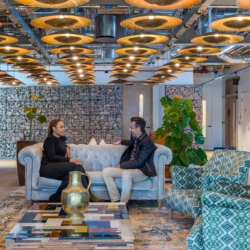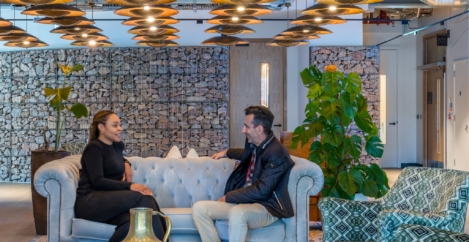May 16, 2024
The workplace is no longer about presence. It’s now all about the experience
 The Gensler Research Institute has announced the findings from its Global Workplace Survey 2024, offering what it says are fresh insights into the future of work. The comprehensive global study shifts the focus from employee presence in the office to workplace performance. The core argument presented in the report is that a high-performing workplace is no longer solely defined by building efficiency or space effectiveness, it is also measured by the workplace experience — or, how employees feel about the space.
The Gensler Research Institute has announced the findings from its Global Workplace Survey 2024, offering what it says are fresh insights into the future of work. The comprehensive global study shifts the focus from employee presence in the office to workplace performance. The core argument presented in the report is that a high-performing workplace is no longer solely defined by building efficiency or space effectiveness, it is also measured by the workplace experience — or, how employees feel about the space.
According to the report, 94 percent of employees in exceptional workplaces have a choice in where they work within the office, granting them the autonomy to work across multiple settings and promoting a higher sense of value and engagement. For the first time, the new survey goes beyond office walls to reveal how exceptional workplaces perform as part of a broader ecosystem of spaces and experiences. These top-performing workplaces, often located in amenity-rich neighbourhoods, are part of a wider environment that includes diverse spaces such as libraries, cafes, outdoor areas, and coworking spaces.
With less than a third of global workplaces having been redesigned in the last three years, according to the authors, there’s a pressing need for organisations to intentionally rethink office spaces to boost company culture and drive business growth.
“It’s time to redefine workplaces for the next evolution of work. Organizations and leaders need to shift their thinking beyond just returning to the office and instead focus on the opportunity to design high-performing spaces for people to work at their best,” said Janet Pogue McLaurin, Global Director of Workplace Research at Gensler. “A great workplace must not only be a tool to get work done effectively but be intentionally designed for human emotion — creating exceptional experiences that support new ways of working both inside and out of the office.”
Key findings:
- Top Performers Set the Standard for Workplace Value
- The most engaged workers value the workplace for the learning, networking and socializing opportunities it offers — the most engaged spend just 36 percent of their time working alone, compared to 44 percent of time for the least engaged.
- At the individual level, the most engaged employees prioritize socializing and learning, while strong teams seek in-office connections, and innovative companies thrive on collaboration, both in-person and out of the office.
- Exceptional Workplaces Offer an Ecosystem of Experiences Beyond the Office
- Building quality had a direct relationship to workplace quality. High-performance workplaces have access to 2.6x as many amenity spaces on-site and 1.6x as many amenities and services in the surrounding neighbourhood.
- Higher-quality buildings are more likely to be in amenity-rich neighbourhoods that enhance workplace performance and experience, underscoring the importance of strategic location and design.
- Exceptional Workplaces Fuel Top Performance
- There is a direct, positive link between top performers at all scales and working in a high-performing workplace.
- 96 percent of employees in high-performing workplaces say they have control over how they manage their time at work, compared to just over half of those in low-performing workplaces.
- 99 percent of employees at the most innovative companies say that they would recommend their organization as a great place to work, compared to just 37 percent in the least innovative.
- 97 percent of the most engaged employees say they are likely to stay with their company next year, compared to just 53 percent of the least engaged.
- There is a direct, positive link between top performers at all scales and working in a high-performing workplace.
The Gensler Research Institute conducted an anonymous, panel-based survey of over 16,000 full-time global office workers across 15 countries including U.S., Mexico, Canada, UK, Germany, United Arab Emirates, Saudi Arabia, Singapore, and the Philippines. Respondents were distributed across 10 client industries and represented a broad cross-section of company sizes, roles, ages, and geographies. The survey was fielded between Oct 31, 2023, and Jan 29, 2024. Respondents excluded full-time remote workers.














